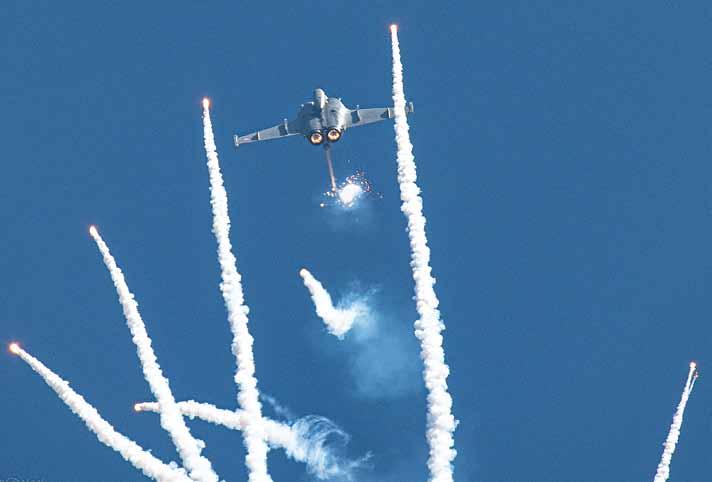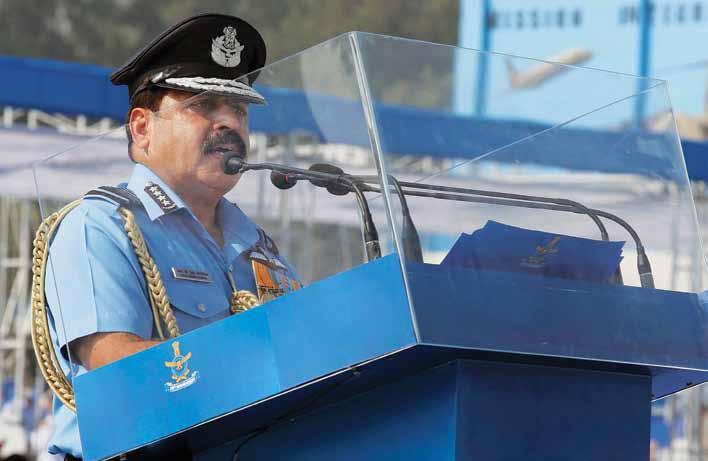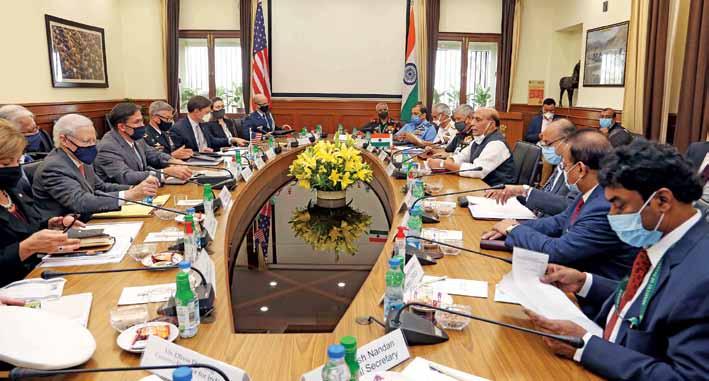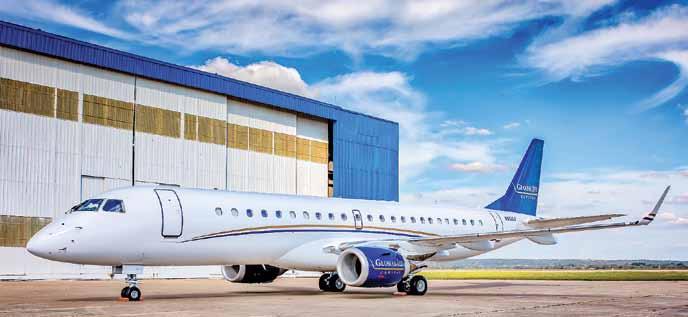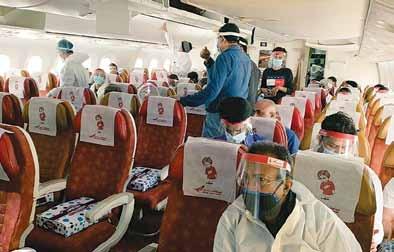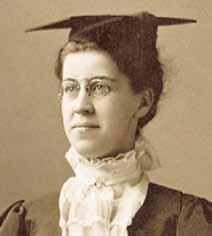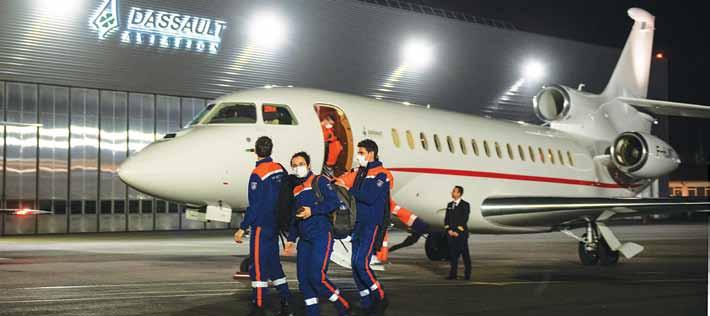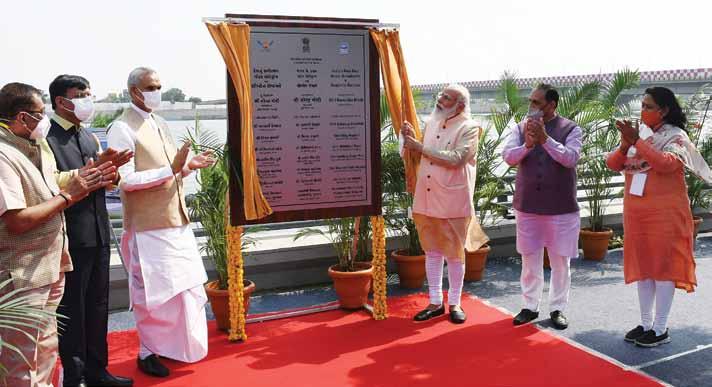
10 minute read
Industry
DurIngcoVID-19, busIness aVIatIon showeD a remarkable recoVery Dueto neeD oF busInesses to traVel saFely In the saFety oFaPrIVate aIrcraFt
The OppOrTuniTy TO reThink and reinvenT Business aviaTiOn in india
Advertisement
The aviation sector in India continues to stay away from innovations partly due to high entry barriers and strong as well as non-adaptive regulations
By Sudhir S. rajeShirke VIce PresIdent – sales, arrow aIrcraft sales and charters PVt. ltd.
We all remember the Monday early morning and Friday Here are four reasons which justify why promoting business late evening crowded commercial flights. The propensity to exe- aviation and providing the right stimulus to this industry will cute businesses, build a vibrant economy and a better quality of create a healthier aviation ecosystem and spur the next level of life and to see new places drove 4.5 billion air travel trips glob- aviation sector growth in India. I have also added the enabling ally in 2019. COVID completely changed the way people per- factors that can drive business aviation growth. ceive travel. The fear of travelling in crowded flights and getting infected diminished global air travel by more than 90 per cent. 1. Business aviation can create a huge impact on However, an unexpected trend emerged. Post lockdowns, while joBs and economy airlines have seen single digit growth compared to 2019 levels, Just as airlines do, business aviation companies employ highly business aviation showed a remarkable recovery backed by the skilled engineers, mechanics, flight despatchers, managers need of businesses and HNWIs to travel safely for undertaking and pilots and are supported by several organisations which their businesses in the safety of private aircraft and operators provide services such as aircraft maintenance, air charter broopening up new business models of selling seats on private jets. kerage, ground handling, food and beverage and technology. Per WingX, The recovery in business jet traffic in USA at this Increase in the number of business aircraft thus creates high point in Autumn 2020 appears to be hitting a ceiling of around quality career opportunities for individuals who wish to con85 per cent of comparable 2019 activity. tribute to the aviation sector and also adds to country’s GDP.
India needs to take advantage of this situation and now It also increases the possibilities for new businesses such focus on building a robust business aviation ecosystem and cre- as fixed based operators (FBO) which number less than five in ate another parallel vibrant industry in the aviation sector. It India. Consider this, per NBAA (in 2015), there were an estiis well documented and proven that it makes great economic mated 3,000 FBOs in US, generating $15 billion in annual revsense for a number of companies and State Governments to enue. This was close to eight per cent of total US airline revenue use business aircraft. Business aviation in the same year and almost of the size also includes usage of helicopters for oil of India’s airline market. While it would and gas industries and also allows State be not be a fair to compare a matured Governments officials to reach remote locations where otherwise would take India needs to take and sizeable US airline industry ($200 billion plus revenue in 2017) to India’s an enormous amount of time. A well advantage of the ($12 billion revenue in FY 2016-17), operated business aircraft saves time, provides travel convenience, increases existing situation even a small possibility of establishing an FBO industry which is one per cent productivity, enhances security of high and focus on building of India’s airline industry would mean profile individuals and helps maintain privacy. But the purpose of this article is not a robust business aviation ecosystem a business revenue potential of approx. $100 million or `700 plus crore. This is a sizeable market. Pilot and engineerto extol the benefits of business avia- and create a parallel ing training for business aircraft is tion. The purpose is three fold. First, it is to provide a high level perspective on vibrant industry another area which can contribute to high quality jobs and revenue for trainthis industry which has generated mil- ing companies. lions of jobs and added billions of dol- Hence developing business aviation lars to the economy of several western further will grow the aviation sector sigcountries, and which has the potential nificantly. to create similar impact on the Indian economy and thus create a holistic civil aviation eco-system along with the airlines. This 2. the right regulatory and operational is required, given our Government’s focus on promoting airlines frameworks for private aviation will help prepare and giving a second grade treatment to business aviation. The the launch of new aerial transportation models second purpose is to provide four key reasons on impact that Business aviation is mostly required on ‘on-demand’ basis and business aviation has on our economy and the third is to pro- hence it is unscheduled in nature. Unscheduled operations need vide actionable recommendations which are within the purview strong operational support such as infrastructure (airport parkof the Government. ing slots, rooftop helipads etc.), skilled professionals (engineers,
Business aviation has always been projected as having an aura pilots, operations specialists) and regulatory support, which can of luxury and exclusivity. Promotions by air charter companies provide quick approvals for on demand transportation. Such may have contributed to that image to a large extent. In a devel- strong operational and regulatory platforms will create the base oping country such as India, an image of a business executive or for future aerial transportation systems, which could be ‘ona high net worth individual using a business aircraft to travel for demand’ in nature. business may seem ostentatious and smacks on the plight of the For example, there has been a phenomenal progress in the airline travelers who have to brave long airport queues to get to development of drone technologies, flying cars and other modes their cramped airline seats. Hence a Government, which works of air transportation for passengers and goods. There is a poshard to make air travel accessible to large sections of the travel- sibility that in the next five to six years we could see deployers by providing incentives to reduce cost of air travel (via UDAN ment of pilot programmes for intra city aerial travel by air initiatives) would obviously shy away from promoting an industry taxis/rickshaws or delivery of goods to our doorsteps by drones which “appears” to cater to corporate excess. However, this preju- (whether we like that scenario or not). Such transportation sysdicial view against business aviation in India is detrimental to the tems will require infrastructure (designated locations to take overall aviation ecosystem, which now only seems to cater to the off and land), skilled professionals (drone pilots, air taxi pilots, airline industry. engineers, operations specialists etc.), navigational support and
most importantly, balanced regulations. Their operations will aviation has been plagued with mindset fatigue i.e. it contincompete with the same limited and regulated airspace as with ues to follow the traditional marketing business practices and any other air transportation system. operating processes in the same way as it has been done for the
Hence unless we set up seamless operational and regulatory past two decades. A few brokers tried to use technology to drive capabilities for business aviation, setting up the same for future aggregation but have not yet been successful as there was not modes of unscheduled aerial transportations would be difficult. much of service innovation. 3. a change in perception on usage of corporate Europe have been enhancing business models by introducor charter aircraft will enhance corporate ing fractional jet ownership, aggressive empty leg marketing, productivity shared private flights, airline partnerships by leveraging techGovernment considers business aviation as an elitist segment. nology, investments and tax regulations and thus bringing down Hence any attempt to ease the industry’s pain points is seen to the cost of chartered and private flights. Charter brokers such pander to the corporate excess. This view has also percolated as Victor and JetSmarter (now FlyXO) have leveraged technoldeeply in the minds of corporate shareholders. ogy and operating models to bring faster response times and
We have seen instances where CEOs of public companies new seamless experiences to private aviation customers. have put-off their decision to purchase a business aircraft or Further, due to unscheduled nature of operations, entrepreuse chartered flights when it was direly needed. This was done neurs can find several opportunities across the supply chain from the perspective that the shareholders might think of an to bring value to business aviation and increase its reach to aircraft purchase or use of chartered flights as an unjustified a wider section of air travelers in India. As a simple example, expense. For example, in a recent instance shareholders of a business aircraft owners and operators are required to estabwell-known company questioned the lish a complete organisation with sevminor use of the chartered flights of its eral specialised staff if they have to CEO, who travelled for more than 500 operate even one aircraft. This not hours in a year in commercial airlines. only increases cost of operations and
A business aircraft is an important For decades, but also adds to the hassles of operattool that gives busy executives the ability to remain “close to the customer” in a challenging business environment and business aviation companies in the ing a heavily regulated aviation company. This discourages a lot of potential new owners from bringing airplanes reduces waste by saving thousands of US and Europe have in India. If such owners / operators hours of non-productive travel time. The capabilities that these assets offer are as been enhancing are allowed to outsource their aircraft operations to a professional aircraft beneficial to the execution of business business models management company, which has the plans as the cellular phone, blackberry or laptop computer. Further, business aircraft have by introducing fractional jet skills and capabilities of managing several aircraft and operates at scale, then it would decrease the cost of aircraft become more efficient in design and ownership operations for owners and operators, performance. A team of three to four avoid managing regulatory hassles and executives can travel anywhere within improve ease of efficiency of business India, especially to tier 2 and 3 cities and aircraft. This would encourage import return home the same day. The average of more aircraft and thus increase the cost per seat on a light jet is only slightly higher than a business overall aviation business. Thus if the regulations around airclass fare of a commercial airline. In addition, executives can craft management become more efficient, business aviation avoid overnight stay at hotels which not only saves costs, but could become a great value proposition. they are also able to return home to their families rather than spend a night at a hotel. what we need
Hence the Government as well as company shareholders Business aviation needs a few enabling factors from the Govneed to change their perspectives and understand that as exec- ernment which will significantly help increase its potential in utive time is the most valuable resource, a corporate aircraft India. They are as follows: should be treated as a productive business tool and executive • Reserved space for business operations at airports: travel should be treated as an investment. If usage of private Whenever any airport traffic gets close to saturation the aircraft by senior political leaders can be seen as a way to effec- business aircraft operators get the first boot. Further, as tively reach out to their constituencies and carry out efficient new airports expansion plans are put in place there is little and productive travel, then the same perspective needs to be or no consideration given to allocate space for parking of accorded to business leaders as well. This can only increase business aircraft and an FBO. Hence when Airport Authorproductivity of senior executives whose time and energy are of ity of India (AAI) plans new airports or considers expanutmost importance for business growth. sion of existing ones, parking space should be allocated for 4. increase in entrepreneurial opportunities A dedicated space should also be allotted to small or large India has developed a thriving entrepreneurial ecosystem FBO depending on historical and potential business aviation which covers many sectors such as retail, travel, logistics and traffic. Promoting business aviation should now figure in the supply chain etc. However, aviation sector continues to stay civil aviation policy making process as well. away from innovations partly due to high entry barriers and For decades, business aviation companies in the US and business aircraft for current and future aircraft inductions. strong and non-adaptive regulations. Particularly the business Continued on page 31...

